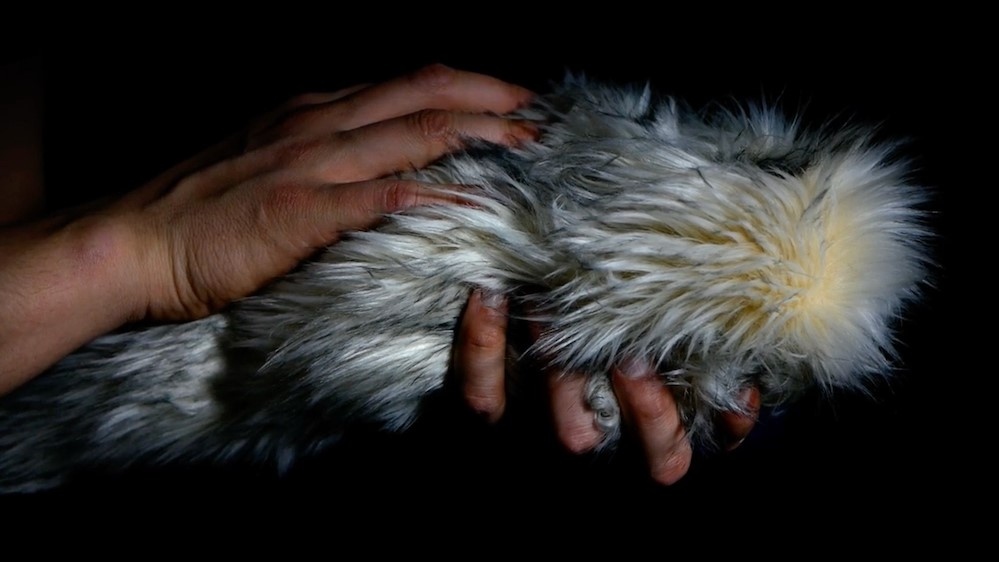What B.C. researchers think robots can learn from therapists
 A fur-covered robot designed for therapy is seen in an image provided by the University of British Columbia. (Credit: Paul Bucci)
A fur-covered robot designed for therapy is seen in an image provided by the University of British Columbia. (Credit: Paul Bucci)
According to British Columbia-based researchers, robots have a lot to learn from therapists.
Paul Bucci, a doctoral student at a Vancouver university, is working on how robots can be used to help comfort humans. While some may be thinking of sentient-seeming bots like Star Wars' C-3PO, the computer science researcher actually works with models like PARO, a synthetic-fur-covered robot that is supposed to resemble a seal pup.
The robot, often used with adults with dementia, is meant to provide companionship and comfort, not conversation.
At the University of British Columbia, Bucci did some work with sick children, and that work made him see things differently, a news release from the school said.
His work at a children's hospice helped him figure out what designers of robots like PARO can learn from actual, human therapists, as well as what work truly requires a human.
Bucci was at the hospice, called Canuck Place, in 2019, during which time he observed the way staff engaged with young residents. He said many of the kids living there were unable to move or were non-verbal, so in their cases, something more intuitive than a fake seal was needed.
What he came out of the experience thinking is that designers of those types of robots need to think about emotions as therapists do.
"They aren't inherent and experienced the same by everyone," he said in the news release.
Then designers can use therapeutic techniques to understand situations better.
"We could include past experiences when analyzing emotional interactions, for instance, rather than just a scale that isn't contextualized or explained," Bucci said.
"Say you designed a robotic dog, and one of the evaluators had been bitten by a dog in the past, so they didn't like how the robot acted; that would change your understanding of how the robot is working."
He said this thinking in advance would save designers from wasting time designing studies that don't measure the goal, which is comfort.
Bucci said these robots and toys can help with therapy, making a person feel more calm or comfortable, but what matters more is the human involved in such a treatment.
Tone of voice, emotional and physical response and other factors not capable from artificial intelligence are what make a difference, "not just saying the right thing in the right order."
He said these devices should be seen as a way to encourage interaction with other humans, not as a way to replace human interaction.
CTVNews.ca Top Stories

Aviation experts say Russia's air defence fire likely caused Azerbaijan plane crash as nation mourns
Aviation experts said Thursday that Russian air defence fire was likely responsible for the Azerbaijani plane crash the day before that killed 38 people and left all 29 survivors injured.
Police identify victim of Christmas Day homicide in Hintonburg, charge suspect
The Ottawa Police Service says the victim who had been killed on Christmas Day in Hintonburg has been identified.
Teen actor Hudson Meek, who appeared in 'Baby Driver,' dies after falling from moving vehicle
Hudson Meek, the 16-year-old actor who appeared in 'Baby Driver,' died last week after falling from a moving vehicle in Vestavia Hills, Alabama, according to CNN affiliate WVTM.
Pizza deliverer in Florida charged with stabbing pregnant woman at motel after tip dispute
A pizza deliverer in central Florida has been charged with pushing her way into a motel room with an accomplice and stabbing a pregnant woman after a dispute over a tip, authorities said.
India alleges widespread trafficking of international students through Canada to U.S.
Indian law enforcement agencies say they are investigating alleged links between dozens of colleges in Canada and two 'entities' in Mumbai accused of illegally ferrying students across the Canada-United States border.
Cat food that caused bird-flu death of Oregon pet was distributed in B.C.: officials
Pet food contaminated with bird flu – which killed a house cat in Oregon – was distributed and sold in British Columbia, according to officials south of the border.
Unwanted gift card in your stocking? Don't let it go to waste
Gift cards can be a quick and easy present for those who don't know what to buy and offer the recipient a chance to pick out something nice for themselves, but sometimes they can still miss the mark.
Raised in Sask. after his family fled Hungary, this man spent decades spying on communists for the RCMP
As a Communist Party member in Calgary in the early 1940s, Frank Hadesbeck performed clerical work at the party office, printed leaflets and sold books.
2 minors, 2 adults critically injured in south Calgary crash; incident was preceded by a robbery
Multiple people were rushed to hospital, including two minors, in the aftermath of a serious vehicle collision on Thursday morning.
































